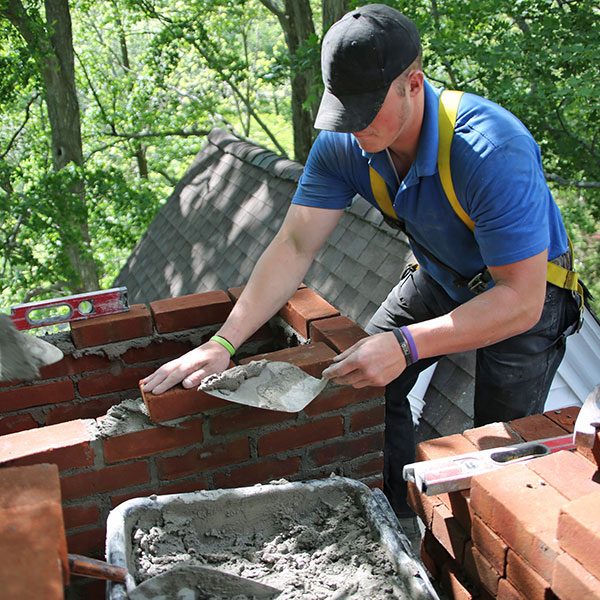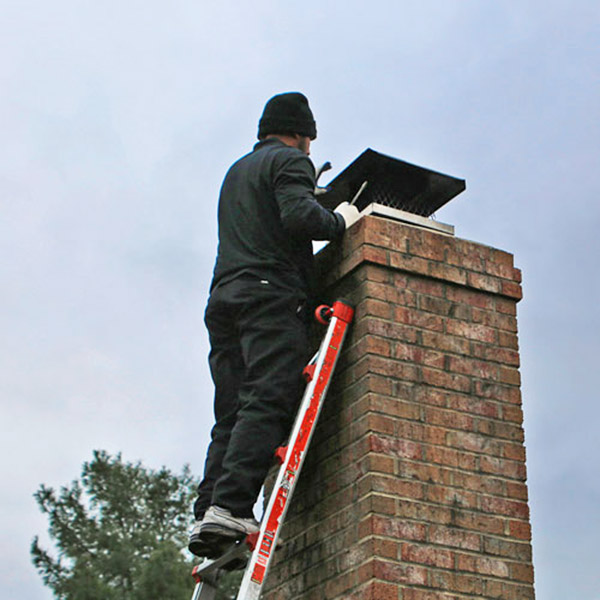What Do I Need To Know About My Chimney System?
Masonry chimneys are probably one of the most overlooked parts of our homes and rarely are they built according to the local building codes. We offer this blog to provide you with some quick guidance on what to look for when assessing the condition of your home’s chimney. The purpose is not to make experts out of you; let’s leave that to properly certified masonry chimney contractors. However, this information may help raise your awareness of possible problems associated with chimneys.
 Your Chimney’s Basic Purpose
Your Chimney’s Basic Purpose
The purpose of a chimney is to allow combustion by-products to be vented away from the structure safely without causing damage to the structure to which it is attached. They should be constructed to discharge these byproducts at a rate that does not adversely affect the combustion process and to release the discharged material at a height and location that provides for fire safety. The general masonry chimney construction process is quite simple if these guidelines are followed.
Common Building Code Requirements
It is important to note that masonry chimney construction building code requirements can often vary on a local basis depending on what your particular city requires.
Typically, the reference used for local building codes is based on NFPA 211: Standard for Chimneys, Fireplaces, Vents, and Solid Fuel-Burning Appliances.
A few of the codes that are typically universally adopted include the following:
- The minimum chimney height for fire safety is the greater of 3 feet above the highest point where the chimney penetrates the roofline, or 2 feet higher than any portion of the structure or adjoining structures within 10 feet of the chimney.
- A chimney flue shall not change in size or shape within 6 inches above or below any point where the chimney passes through a combustible floor, ceiling, or roof component.
- Residential masonry chimney wall thickness should be a nominal 4 inches.
- Masonry chimneys should be lined. The selection of the lining material should be appropriate for the class of chimney service and the type of appliance to it in accordance with the terms of the appliance listing and the manufacturer’s instructions.
- Chimney clearance from combustible material is a minimum of 2 inches except where the chimney is located outside the structure, in which case 1 inch is acceptable.
- According to most building codes, flues may be constructed to discharge their byproducts with other flues as long as the following conditions are met:
- The flues do not slope more than 30 degrees from vertical.
- The flues are discharging byproducts of similar fuels (i.e., you can’t combine a flue venting gas byproducts with one venting wood byproducts).
- When combining flues, the main discharge flue should be sized for the maximum combined flow of both smaller flues.
 Keeping Water Out of Your Chimney
Keeping Water Out of Your Chimney
should be designed to keep moisture from entering the system. If the masonry chimney cap is constructed with mortar only, it will crack severely because mortar is designed to hold at a maximum of ¾ of an inch and not in mass amounts. The cap should be constructed with cast in place concrete, precast concrete, or stone. It should be sloped away from the flue to direct water out of harm’s way. If water gets between the flue and the structural masonry, it can cause efflorescence in high humidity areas; it can also freeze, leading it to simply pry your cap off your chimney. The cap should overhang the chimney wall at least 2 inches and should have a drip edge cast into the overhang. Rainwater will now be directed off of the top of the chimney and drips off of the overhang.
How Your Chimney System Functions
When you think about wood stoves and fireplaces, your next thought is usually about the chimney. The best, most well-built unit can only perform as well as the chimney to which it is connected. They work together as a system. The chimney drives the system by exhausting flue gases from the fireplace and simultaneously pulling fresh combustion air into the fireplace. A continuous supply of air is crucial to maintaining a steady, hot fire. That supply of air is dependent on the ability of the chimney to exhaust flue gases as they are created by the combustion occurring in the fireplace.
Air supply, combustion, and exhaust are all part of the same balanced process in a well-designed system. A lazy, smoldering fire, back puffing, and down drafting are all symptoms of a poorly designed chimney or one that wasn’t intended for the stove or appliance with which it is being used; in most cases, the existing chimney is too large. Our hope is that by understanding the principles of what makes a good chimney work you can avoid some obvious mistakes right from the start. For more information, feel free to give us a call. Above & Beyond Chimney Service is always happy to help you plan a safe and effective chimney system.
